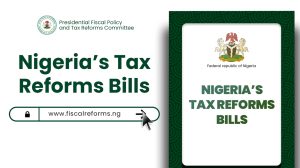Kenya Exits Debt Distress as it Celebrates 60th Independence Day
Kenya has reached a significant milestone on its 60th Independence Day, emerging from the World Bank’s classification of debt distress. This achievement comes after years of implementing fiscal consolidation measures and prudent debt management strategies.
The World Bank defines debt distress as a situation where a country has a high probability of defaulting on its external debt obligations. Kenya was classified as being in debt distress in 2015, due to a combination of factors such as rising government borrowing, a weakening currency, and slow economic growth.
However, in recent years, the Kenyan government has made significant strides in improving its debt profile. The government has reduced its budget deficit, increased tax revenue, and renegotiated some of its debt obligations. These measures have helped to reduce Kenya’s debt-to-GDP ratio from 61% in 2015 to 56% in 2023.
The World Bank’s decision to remove Kenya from the debt distress classification is a positive sign for the country’s economic prospects. It will make it easier for Kenya to access foreign loans at lower interest rates, which will support economic growth and development.
However, it is important to note that Kenya’s debt burden remains high. The government still needs to work on further reducing its debt-to-GDP ratio and diversifying its sources of financing. Additionally, Kenya needs to ensure that its borrowed funds are used effectively for productive purposes that will generate economic growth and create jobs.
Overall, Kenya’s emergence from debt distress is a cause for cautious optimism. The country has made significant progress in managing its debt, but there is still more work to be done. By continuing to implement sound economic policies and investing in productive sectors, Kenya can build on its recent success and achieve sustainable economic growth in the years to come.
Here are some of the key factors that contributed to Kenya’s exit from debt distress:
Fiscal consolidation: The Kenyan government has reduced its budget deficit in recent years, mainly by cutting spending and increasing tax revenue.
Prudent debt management: The government has renegotiated some of its debt obligations to obtain lower interest rates and extended maturities.
Also Read: US, Kenya sign $100 million defence cooperation
Stronger economic growth: Kenya’s economy has grown steadily in recent years, which has helped to increase government revenue and improve the country’s debt-to-GDP ratio.













